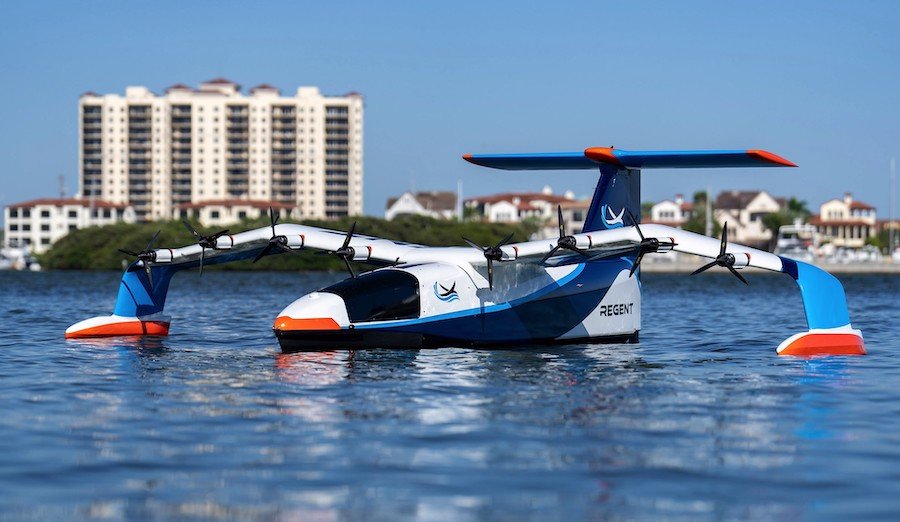Hawaii Just Got a Lot More Exotic With Crazy, 180-MPH Seagliders

For hundreds of years islanders have relied on boats to get where they need to be, but also to get delivery of much-needed goods. It's a cheap and effective way of doing so, but when great distances are involved, it can take a bit too long.
The reason for that is the fact boats regardless of their type can only go so fast, and that is why the advent of aviation solved a lot of problems. But flying has another major flaw: it is expensive.
But what if I told you Hawaii is looking into technologies that could solve all these problems, and would allow its inhabitants and tourists to move on the surface of the water at speeds of up to 180 mph (290 kph), and do so very affordably?
It was back in the summer of last year when we first learned about this possibility, thanks to a company called Regent Craft and the interest local Hawaiian authorities are taking in… seagliders.
Regent is the maker of something called the Viceroy. That would be a fully-electric machine that could carry up to 12 passengers not on the water, or completely above it, but somewhere in between.
The thing has been designed to have the body of a vertical take-off and landing aircraft, but the capabilities of a plane, boat, and ground-effect vehicles all in one.
The plane part consists of the way the Viceroy was designed. It kind of looks like an airplane, with a main fuselage and two sets of wings, one midway and the other one, smaller, at the rear.
The basic interior design is the same as in airplanes as well, with two rows of seats separated by an aisle, and the pilots' stations (there are two of them) up front.
The ground-effect part of its makeup is given by its ability to fly over land at not-that-great altitudes. Finally, the boat part is owed to the fact it can do the same thing over water, only this time using hydrofoils.
The thing is electric, but the details on that are scarce at the moment. We don't know who will be supplying the batteries and the 12 motors meant for the six propellers fitted on each wing. But we do know what to expect, spec-wise.
As per Regent, the Viceroy should be capable of traveling for a distance of up to 186 miles (300 km) on a single charge - which, taking into account its speed, it should cover in a single hour. An option to upgrade the battery pack for a range of 460 miles (740 km) will also be on the table.
The thing would be able to carry, as said, up to 12 passengers and two crew, but it is suitable for conversion to a cargo hauler, in which case it could transport up to 3,500 pounds (1,600 kg) of supplies.
It's a very interesting proposition that has caught the eye and ignited the imagination of a large number of companies and institutions operating in Hawaii. So much so, in fact, that a coalition was formed to make seaglider transport on the islands a reality as soon as possible.
The coalition is called the Hawaii Seaglider Initiative (HIS) and has the backing of no less than 21 entities. Among them are major players in the transportation industry, like Alaska Airlines, Hawaiian Airlines, Japan Airlines, Mokulele Airlines, and United Airlines.
The companies and a host of government organizations have pledged to work for the rest of the year to create "the socioeconomic and technical feasibility of establishing an inter-island and intra-island seaglider network in Hawaii."
Once that is out of the way, Mokulele Airlines plans to become the first operator of sea gliders not only in the region but also in the world. A fleet of Viceroys will be deployed in its service by the middle of the decade.
The seagliders will only be used for moving people and cargo over water. They will take off by floating on a hull, rise on the hydrofoils and, once a set speed is reached, would move at heights of 30 to 60 feet (9 to 18 meters) above the waves.
As per the company planning this, the cost of a trip on the seaglider would be much cheaper than traditional means. More to the point, a voyage between Oahu and Maui or Kauai (both routes are a little over 100 miles/160 km long) would not cost more than $30. For reference, a seat on a Hawaiian Airlines plane would set you back at least $100.
So, if you were planning a trip to Hawaii in the coming years, maybe it'd be best to wait until the seagliders get there. I'm pretty certain it will be an experience in itself.


Related News


